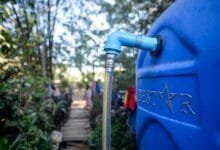
27 NOV 2019 – Myanmar-Norway Bilateral Environmental Programme is the collaboration between Myanmar authorities, the Ministry of Natural Resources and Environmental Conservation, the Ministry of Agriculture, Livestock and Irrigation, the Ministry of Transport and Communication and Norwegian institutions, Norwegian Institute for Water Research, Norwegian Environment Agency, SINTEF.
Funding agency: The Norwegian Ministry of Foreign Affairs / The Royal Norwegian Embassy in Myanmar.
The event was held on the 25th October at International Business Center (IBC), Yangon. According to the agenda, it comprises two sections; the first section includes the presentation on the completion of phase I of the programme and the second is the introduction of phase II.
Presenting the completion of IWRM project phase I
The programme involves three projects;
- Integrated Water Resources Management (IWRM),
- Conservation of Biodiversity and
- Improved Management of Protected Areas in Myanmar, and Management of Hazardous Waste.
Then Dr.Ingrid Nesheim, Research Scientist from NIVA, presented about the completion of IWRM project phase I. IWRM is a process which promotes the coordinated management of water, land and related resources, in order to maximize economic and social welfare in an equitable manner without compromising the sustainability of vital ecosystems.
The project consists of five main components,
- Rehabilitation and instrumentation of the laboratory at the Forest Research Institute, Nay Pyi Taw.
- Water quality database and installation of the server.
- Development of adapted ecological water quality criteria for Myanmar.
- Monitoring of Inlay Lake.
- Piloting the River Basin Management approach in the Sittaung River Basin, Bago River Sub-Basin.
After that, Dr.Thaung Naing Oo, Director, Forest Research Institute (FRI) presented about the completion of the rehabilitation and instrumentation of the National Water Lab. The laboratory will offer services to government agencies, academic institutions and other partners to study the quality of Myanmar water resources.
Then, the completion of Biodiversity project phase I was presented by Daw Khin Nyein San, Staff Officer, Natural Wildlife Conservation Division. The Biodiversity project provided and implemented an Action Plan for Improved Wetland Management, and ensured development of a National Wetland Policy for Myanmar, management plans for protected areas were developed, in addition to capacity building and training of staff (Norwegian Environment Agency and in Nature and Wildlife Conservation Division Forest Department). The project sites include;
- Indawgyi Lake Wildlife Sanctuary.
- Chatthin Wildlife Sanctutary.
- Namataung National Park.
- Popa Mountain Park.
- Shwesettaw Wildlife Sanctuary.
- Moeyungyi Wetland Wildlife Sanctuary.
A Ramsar Expert presented about the National Wetland Inventory which includes processing of the data and making it available, producing the maps, technical report and statistical calculations of wetland areas.
U Hein Latt, Assistant Director, Environmental Conservation Department, presented about the completion of Hazardous Waste project phase I. The Hazardous Waste Project prepared a draft regulation on transboundary movement of hazardous waste, a draft regulation on hazardous waste management; conducted first-generation inventory on hazardous waste and technical feasibility, prepared a Master Plan for hazardous waste management; and carried out capacity building activities for various stakeholders (Norwegian Environment Agency, SINTEF and the Environmental Conservation Department).
Phase II from 2019 to 2023
In the second section, Dr Toe Toe Aung, Assistant Director, WMD FD, presented about the IWRM project phase II. The proposed IWRM Phase II project is ambitious with regard to important core aspects of enabling management according to the IWRM approach.
Core objectives of the project are:
- The FRI water quality laboratory at MONREC provides high-quality analysis of physiochemical parameters, bacteria, heavy metals, and organic pollutants.
- Decision making for the development of River Basin Management Plans in Myanmar is characterized as knowledge-based decision making – in line with the ecosystem management approach.
- Decision making for the development of River Basin Management Plans is coordinated and transparent across administrative borders within the river basin.
Project case study areas are; in Bago region (the Sittaung River, Bago River and ShweKyin River) and in Taninthari region (Taninthari River) to cover the diversity of main different ecological sites.
Mr.Jan-Petter Huberth-Hansen, Project Leader, Norwegian Environmental Agency, presented about Biodiversity project phase II. The project will continue to build on earlier work from and focus on training courses, educational programs, implementation of measures of the national wetland strategy, implementation of management plans for conservation areas, andon species management – including endangered species.
After that, Daw ThinThin Soe, Deputy Director, ECD, presented about the Hazardous Waste project phase II. The project will focus on capacity building and awareness-raising, continued information gathering, sound treatment options, demonstration of integrated treatment options like cement kilns, conceptual studies etc.
The presentation files that are presented in the event are as follows;
- Integrated Water Resource Management project phase I overview
- Integrated Water Resource Management project phase II overview
- Biodiversity project phase I overview
- Hazardous Waste project phase I overview
- Hazardous waste project phase II overview
Written by Thandar and Thinzar Mon (Yangon Technological University)
For more information about the programme, here.









